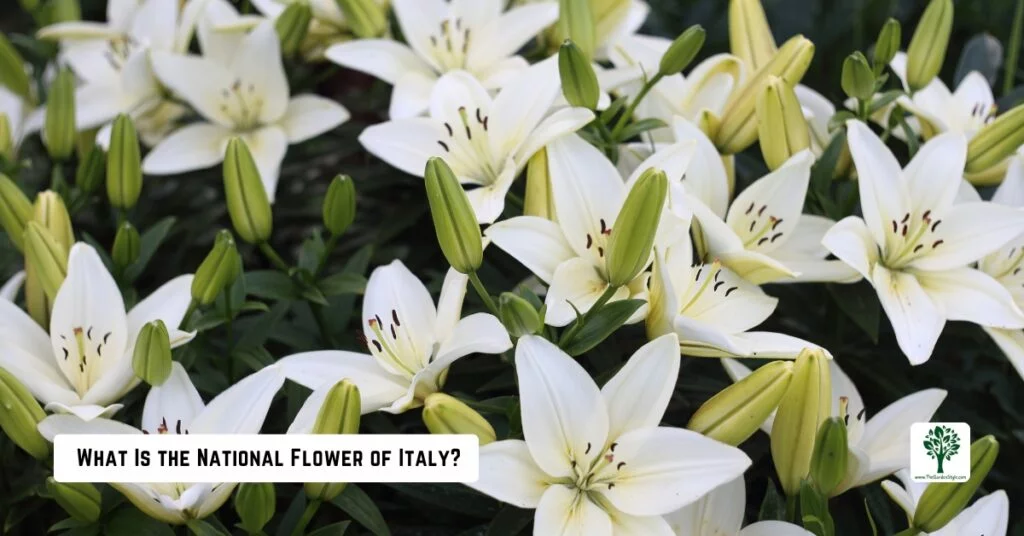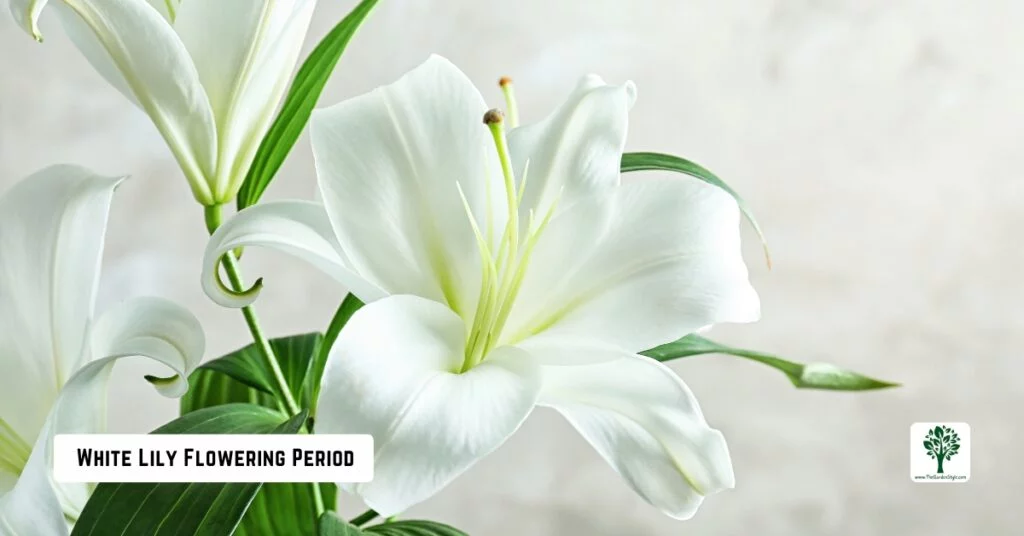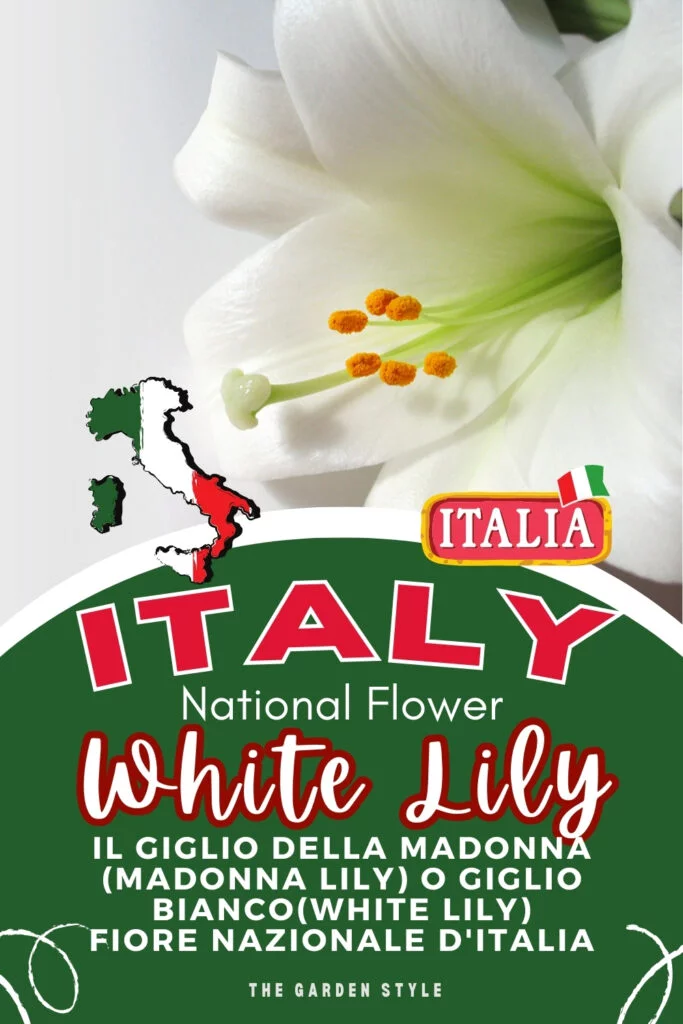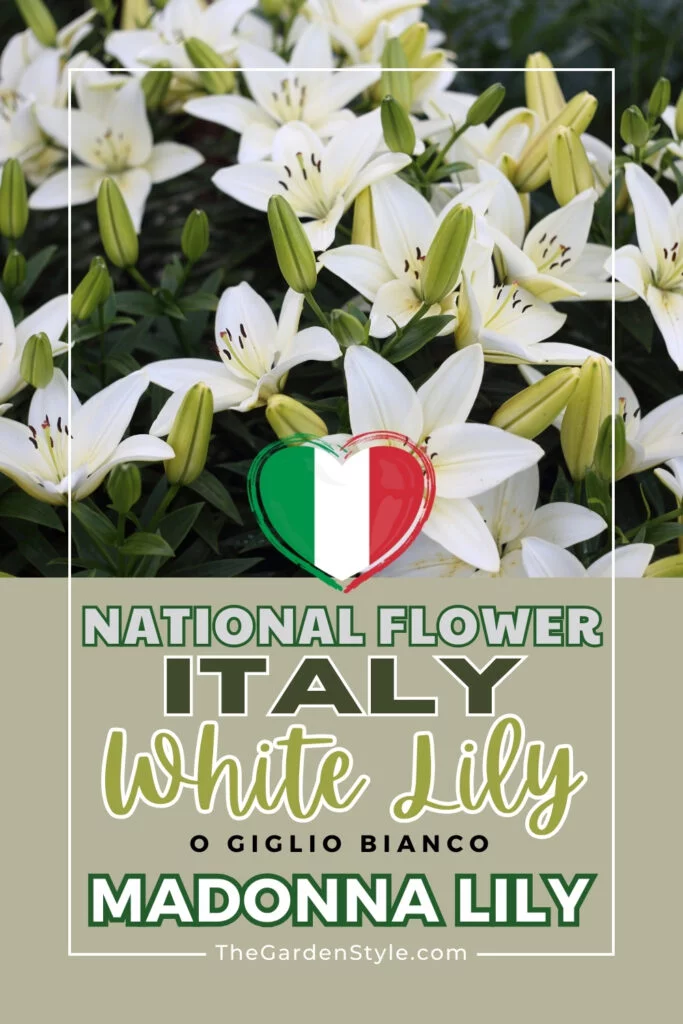Italy, renowned for its rich cultural heritage, boasts a plethora of symbols that resonate deeply with its people. Among these cherished emblems is the national flower of Italy, the elegant and timeless white lily (Lilium candidum), also known as the Madonna lily. This delicate bloom holds profound symbolism and cultural significance within the Italian landscape, embodying notions of purity, virtue, and spiritual resonance.
Table of Contents
What Is the National Flower of Italy?

The white lily has deep historical roots in Italy, with its origins intertwined with ancient Roman and Christian traditions. In Roman mythology, the lily was associated with Juno, the queen of the gods, symbolizing her purity and motherhood. As Christianity took root in Italy, the lily became intertwined with the Virgin Mary, symbolizing her immaculate conception and purity. Over the centuries, the white lily became an enduring symbol of divinity, grace, and innocence in Italian culture.
The choice of the white lily as Italy’s national flower is steeped in symbolism that reflects the nation’s values and heritage. The purity and beauty of the flower are seen as emblematic of Italy’s cultural richness and artistic legacy. Furthermore, its association with the Virgin Mary resonates deeply with Italy’s predominantly Catholic population, serving as a reminder of faith and spirituality.
Throughout Italian art and literature, the white lily has been a recurring motif, inspiring countless artists, poets, and writers. From Renaissance paintings depicting the Annunciation to the poetry of Dante Alighieri, the lily has been celebrated as a symbol of divine grace and purity. Its timeless beauty continues to inspire creative expression and serves as a muse for artists seeking to capture the essence of Italy’s cultural identity.
Characteristics Of the White Lily
The white lily, scientifically known as Lilium candidum, possesses a range of characteristics that contribute to its elegance and cultural significance. Here are some key features of this iconic flower:
- The white lily typically features large, trumpet-shaped flowers with pure white petals that radiate outwards from a central stem.
- Each flower typically consists of six petals, giving it a symmetrical and balanced appearance.
- The flowers often have a subtle fragrance, adding to their allure and beauty.
- White lilies are perennial plants, meaning they live for multiple years, regrowing from their bulbs each spring.
- They can reach heights of up to three to four feet, depending on the variety and growing conditions.
- White lilies thrive in well-drained soil and prefer full sun to partial shade, making them suitable for a variety of garden settings.
White Lily Flowering Period

The flowering period of white lilies, also known as Lilium candidum, typically occurs in late spring to early summer, usually from May to July, depending on the specific climate and growing conditions. However, the exact timing of flowering can vary based on factors such as geographic location, local climate, and the particular variety of white lily.
In regions with milder climates, white lilies may start flowering earlier in the spring, while in cooler climates, flowering may be delayed until later in the season. Additionally, the timing of flowering can be influenced by factors such as soil moisture, sunlight exposure, and temperature fluctuations.
White lilies are perennial plants, meaning they bloom annually from the same bulbs. Once the flowering period begins, the elegant trumpet-shaped flowers emerge from tall stalks and grace gardens, parks, and landscapes with their exquisite beauty and delicate fragrance.
To prolong the flowering period and enjoy white lilies in full bloom, it’s essential to provide them with adequate sunlight, well-drained soil, and regular watering throughout the growing season. Deadheading spent flowers can also encourage continued blooming and maintain the plant’s vitality.
Recommended reading: What are Bulbs in Plants – Full Information
If this post about the national flower of Italy was helpful, please share it:


